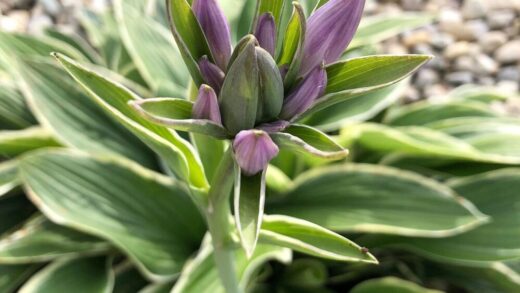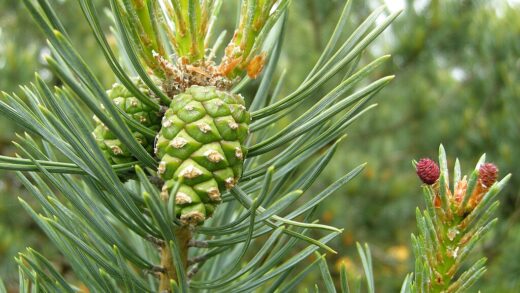Successfully establishing bellflowers in the garden hinges on proper planting techniques and an understanding of their propagation, allowing a gardener to not only introduce these charming plants but also to multiply their stock over time. The process begins with the careful selection of a suitable site, one that meets the specific light and soil requirements of the chosen variety, as this foundational step will dictate the plant’s future health and vigor. Whether starting with nursery-grown plants, seeds, or divisions from an existing clump, the methods employed will have a direct impact on how quickly and robustly the bellflower establishes itself. This initial exploration into planting and propagation will cover the essential first steps, from soil preparation to the correct placement of a new plant, setting the stage for a thriving and floriferous display.
Before any planting can occur, the garden bed must be thoroughly prepared to welcome its new inhabitants. This is arguably the most critical phase, as a well-prepared site encourages rapid root development. Start by clearing the designated area of all weeds and debris, ensuring that the new bellflowers will not have to compete for resources from the outset. Next, cultivate the soil to a depth of at least twelve inches, loosening any compaction and creating a friable texture. This is also the perfect opportunity to incorporate organic amendments, such as compost, well-rotted manure, or leaf mold, which will improve soil structure, enhance drainage in heavy soils, and increase moisture retention in sandy soils, while also providing a gentle supply of essential nutrients.
When planting nursery-bought container plants, the timing and technique are key. The best times to plant perennial bellflowers are in the spring or early autumn, as the cooler temperatures and more consistent moisture levels reduce the risk of transplant shock. Dig a hole that is roughly twice the width of the plant’s container and just as deep. Carefully remove the plant from its pot, gently teasing out any circling roots at the bottom of the root ball to encourage them to grow outwards into the new soil. Place the plant in the center of the hole, ensuring that the top of the root ball is level with the surrounding soil surface. Planting too deep can lead to crown rot, a common issue that can be fatal to the plant.
After situating the plant correctly in the hole, backfill with the amended soil, firming it gently around the root ball to eliminate any large air pockets. It is important not to compact the soil too heavily, as this can impede root growth and water penetration. Once the hole is filled, create a shallow basin or “well” of soil around the base of the plant to help direct water to the root zone. Water the newly planted bellflower thoroughly and deeply, allowing the water to soak in and settle the soil. This initial, generous watering is crucial for establishing good contact between the roots and the soil and provides the moisture needed to begin the establishment process.
For those looking to expand their collection, understanding the basics of propagation is invaluable. Bellflowers can be propagated through several methods, including seed sowing, division, and cuttings, each with its own set of advantages. Seed propagation allows for the creation of a large number of plants relatively inexpensively, though some species may not flower in their first year. Division, as previously discussed, is an excellent way to rejuvenate and multiply established clumps. Taking basal cuttings is another effective technique, particularly for certain species, and involves taking new shoots from the base of the plant in the spring. Each method offers a rewarding way to increase the presence of these beautiful flowers throughout the garden.
More articles on this topic
Propagation from seed
Propagating bellflowers from seed is a rewarding and cost-effective method for generating a large number of plants, perfect for creating bold drifts of color in borders or for naturalizing in a meadow setting. The approach to sowing can vary depending on the species and the desired timeline. For many hardy perennial varieties, seeds can be sown directly into a prepared garden bed in late autumn or early spring. Sowing in autumn allows the natural winter cold to stratify the seeds, a process that breaks their dormancy and is required by some species for germination. When direct sowing in spring, it is best to wait until the danger of hard frost has passed and the soil has begun to warm.
For greater control and higher germination rates, starting seeds indoors is often the preferred method. This is typically done six to eight weeks before the last expected frost date in your region. Use a sterile, high-quality seed-starting mix and sow the seeds thinly in trays or small pots. It is important to note that many bellflower seeds require light to germinate, so they should be pressed gently onto the surface of the soil mix but not covered with it. A very light dusting of fine vermiculite can help to maintain humidity around the seeds without blocking the necessary light.
Maintaining the correct environmental conditions is critical for successful germination. The seed trays should be placed in a location that receives bright, indirect light, and the soil must be kept consistently moist but not waterlogged. Using a spray bottle to mist the surface is an excellent way to water without dislodging the tiny seeds. Covering the trays with a clear plastic dome or a sheet of plastic wrap can help to create a humid microenvironment, which aids in germination. Most bellflower seeds will germinate within two to four weeks when kept at a consistent temperature of around 18 to 21 degrees Celsius.
Once the seedlings have germinated and developed their first set of true leaves, they can be carefully pricked out and transplanted into individual pots or cell packs to give them more space to grow. Continue to grow them in a bright, protected location, gradually acclimatizing them to outdoor conditions over a week or two before planting them out in the garden. This process, known as hardening off, is essential to prevent the shock of moving from a sheltered indoor environment to the more variable conditions of the outdoors. The young plants can then be transplanted into their final garden positions after the last frost date has passed.
More articles on this topic
Propagation by division
Division is one of the most reliable and straightforward methods for propagating herbaceous perennial bellflowers, offering a way to create new plants that are genetically identical to the parent. This technique is particularly useful for named cultivars, as propagation from seed may not result in plants that are true to type. Furthermore, division serves the dual purpose of decongesting and reinvigorating an established clump that may have become overcrowded or lost vigor over time. The optimal times for dividing bellflowers are in the early spring, just as new growth is beginning to show, or in the early autumn, which allows the new divisions sufficient time to establish a root system before the onset of winter.
The first step in the process is to carefully excavate the entire plant clump from the ground. Using a sturdy garden fork is recommended, as it is less likely to slice through the roots than a spade. Insert the fork into the soil at a distance from the base of the plant to encompass as much of the root ball as possible, and gently lever the clump upwards from several points around its circumference. Once the clump is free, lift it from the ground and place it on a tarp or a clear patch of ground to make the next steps easier and cleaner.
With the clump out of the ground, the next task is to separate it into smaller sections. The method for this can depend on the size and density of the root ball. For many species with fibrous roots, it is often possible to gently pull the sections apart by hand, teasing the roots until they separate into smaller, viable pieces. For older, more woody, or densely packed clumps, a more forceful approach may be necessary. This can involve using two garden forks inserted back-to-back into the center of the clump and then pried apart, or using a sharp, clean tool such as a spade, a hori-hori knife, or an old bread knife to cut the clump into sections.
When making the divisions, the most important consideration is to ensure that each new piece has a healthy complement of both roots and at least one, preferably several, growing points or crowns. The less vigorous, woody center of the old clump can be discarded, with the more energetic growth from the perimeter being the best choice for replanting. These new divisions should be planted immediately back into prepared soil at their original growing depth and watered in thoroughly. This quick replanting minimizes the stress on the plant and prevents the delicate roots from drying out, giving them the best possible chance to establish quickly and thrive.
Propagation by cuttings
Taking cuttings is another highly effective method for propagating many types of bellflowers, especially for those species that may not divide easily or for creating new plants without disturbing the main clump. The most common type of cutting taken from bellflowers is a basal cutting. This technique is performed in the spring when new shoots are emerging from the base of the plant and are typically two to four inches in length. These young, vigorous shoots are ideal for rooting and will readily form new plants under the right conditions. This method is particularly valuable for propagating specific cultivars to ensure the new plants are identical clones of the parent.
To take a basal cutting, select a healthy, non-flowering shoot and, using a sharp, sterilized knife or razor blade, sever it from the parent plant as close to the base or crown as possible. It is often beneficial to include a small piece of the woody crown tissue at the base of the cutting, as this area is rich in dormant buds and hormones that can encourage rooting. Once the cutting is taken, remove the lower leaves to prevent them from rotting and to reduce water loss through transpiration. If the remaining upper leaves are very large, they can be cut in half to further conserve moisture while the cutting develops roots.
After preparing the cuttings, they can be inserted into a rooting medium. A sterile, well-draining mix, such as a combination of perlite and compost or a commercial seed-starting mix, works well. To enhance the chances of success, the base of each cutting can be dipped into a rooting hormone powder or gel before insertion. Insert the cuttings into the medium, ensuring that the first set of remaining leaves is just above the surface. Water the medium gently and then cover the pot or tray with a clear plastic bag or a propagator lid to create a humid environment that will prevent the cuttings from wilting.
Place the prepared cuttings in a warm location with bright, indirect light, but avoid direct sunlight, which can scorch the leaves and overheat the mini-greenhouse environment. Check the cuttings regularly, airing them out every few days to prevent fungal growth and ensuring the medium remains moist but not saturated. Rooting typically occurs within a few weeks, and new top growth is a good indication that a root system has formed. Once the cuttings are well-rooted, they can be gradually acclimatized to lower humidity and then potted on into individual containers to grow on before being planted out into the garden.
Planting considerations for different types
The vast diversity within the Campanula genus means that a one-size-fits-all approach to planting is not always effective; the specific type of bellflower dictates its ideal placement and planting strategy. The tall, stately border varieties, such as Campanula lactiflora and Campanula persicifolia, are best suited for the middle or back of a perennial border. When planting these, it is crucial to consider their mature height and spread, providing ample space between plants to ensure good air circulation, which is vital for preventing fungal diseases like powdery mildew. A spacing of at least 18 to 24 inches is generally recommended for these larger specimens.
In contrast, the low-growing, mat-forming or cushion-forming alpine species require a completely different approach. Varieties like Campanula carpatica, Campanula portenschlagiana, and Campanula garganica thrive in well-drained, gritty soils and are perfectly suited for rock gardens, troughs, container planting, or for tucking into the crevices of stone walls. When planting these alpine types, it is essential to replicate their native environment by ensuring exceptionally sharp drainage. Amending the planting hole with generous amounts of grit or fine gravel is often necessary. They prefer a sunny spot but appreciate some protection from the most intense afternoon sun in hotter climates.
Some bellflower species have a spreading or trailing habit, making them excellent choices for ground cover or for cascading over walls and the edges of containers. Campanula poscharskyana, the Serbian bellflower, is a prime example of a vigorous spreader that can quickly cover an area with its star-shaped lavender flowers. When planting such varieties, it is important to be mindful of their spreading nature and place them where their growth will be a benefit rather than a nuisance to more delicate, neighboring plants. They are generally tough and adaptable, tolerating a range of conditions, but will perform best in well-drained soil with moderate moisture.
Biennial species, such as the classic Canterbury bells (Campanula medium), have a two-year life cycle and require a specific planting timeline. They are typically grown from seed one year to flower in the next. Seeds are sown in late spring or early summer, and the young plants are grown on before being planted into their final flowering positions in the autumn. This allows them to establish a strong root system and a rosette of leaves before winter. They will then overwinter and send up their impressive flower spikes in the following late spring or early summer, creating a spectacular, albeit temporary, display.


















